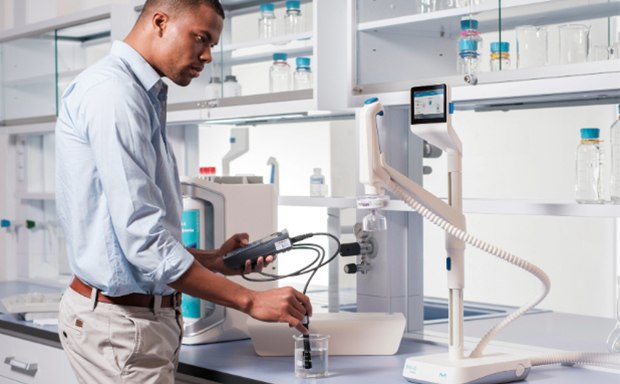Understand the Value of Water Testing in Preserving Compliance With Health Standards
In the world of public health and wellness, understanding the value of water testing is indispensable for maintaining conformity with strict health standards established forth by reliable bodies like the WHO and EPA. This practice acts as a frontline defense against the seepage of unsafe contaminants, ranging from microbial pathogens to dangerous chemicals. Yet what are the exact methods utilized in water screening, and just how do they make certain that our most important resource continues to be unpolluted? As we check out these elements, the more comprehensive effects for regulative conformity and ecological sustainability begin to unravel, welcoming additional consideration on this critical topic.
Trick Wellness Standards for Water
Guaranteeing the safety and security and high quality of alcohol consumption water is vital, as it directly affects public health. Strict health standards are established to secure people from waterborne diseases and contaminants that can lead to damaging wellness effects. The World Health And Wellness Company (THAT) and nationwide companies like the Epa (EPA) in the United States established standards and regulatory limits for numerous physical, chemical, and biological parameters in drinking water.
These criteria are based upon substantial scientific research and are occasionally assessed to incorporate brand-new findings and technical advancements. Secret specifications include microbial contaminants such as bacteria and infections, chemical contaminants like lead and arsenic, and physical attributes such as turbidity and pH levels. Conformity with these standards makes certain that water is complimentary from hazardous materials and is aesthetically pleasing to the customer.
Water testing plays an essential function in validating compliance with these wellness requirements. Regular surveillance and testing assistance recognize prospective issues before they pose a substantial health and wellness danger, enabling for timely intervention and remediation. By sticking to these requirements, water suppliers can maintain public confidence in the security of the area's water system, thereby safeguarding public health and wellness successfully.
Usual Contaminants Discovered
When assessing water quality, what are one of the most common impurities that tend to be found? Comprehending the common pollutants is critical for preserving compliance with health and wellness requirements. Microbial microorganisms, consisting of microorganisms like Escherichia coli and protozoans such as Giardia and Cryptosporidium, are often discovered in water sources, posturing considerable health and wellness threats if consumed. Water Tesing Services Orlando. These virus commonly stem from fecal contamination because of inadequate wastewater treatment or overflow from farming areas.
Chemical impurities are additionally a main issue. Nitrates, commonly resulting from agricultural plant foods, can bring about significant health problems, particularly in infants. Heavy steels such as arsenic, lead, and mercury, normally introduced through industrial discharge or all-natural mineral deposits, can have lasting poisonous effects. Unstable organic substances (VOCs) and chemicals, byproducts of commercial tasks and agricultural practices, additional contribute to water contamination.
Inorganic compounds such as fluoride and chlorine, although often intentionally contributed to water for health and wellness advantages, can become problematic at raised degrees. Arising impurities, including pharmaceuticals and personal treatment items, are increasingly being discovered, elevating worries regarding their potential effect on human health and communities. Dealing with these pollutants is necessary for guarding public health and wellness and ensuring water high quality compliance.
Methods of Water Screening
Water screening's precision is vital for identifying impurities and making certain safety conformity. One common strategy is spectrophotometry, which measures the absorption of light by chemical compounds in the water, consequently recognizing components like nitrates and phosphates.
Chromatography is another advanced technique utilized, specifically for natural pollutants. By dividing mixes into individual parts, it permits detailed analysis of complex pollutants. Gas chromatography and fluid chromatography are commonly used versions, each suited for various substance types.
Microbiological testing is vital for identifying pathogens such as germs, infections, and protozoa. Methods such as membrane layer filtering and multiple-tube fermentation are employed to more helpful hints culture and identify microbial visibility. These approaches are crucial in securing public health and wellness by making certain microbial security.

Benefits of Regular Screening
Understanding the various techniques of water screening highlights the necessity of regular screening methods to keep water high quality. Regular water screening works as a proactive action to recognize prospective contaminants before they intensify right into serious wellness risks. By consistently monitoring water top quality, organizations can detect toxins such as bacteria, hefty metals, and chemical deposits early, allowing for timely treatments that protect against health risks and pricey remediation initiatives.

Additionally, regular testing makes sure that water supply abide with recognized wellness standards and regulations. This conformity is critical for avoiding lawful fines and maintaining the count on of stakeholders and consumers. Constant water top quality assessments help determine trends or variations in water structure, offering useful data that can guide operational choices and resource management methods.
In industries such as metropolitan water food, supply, and medical care handling, maintaining high water my explanation quality requirements is integral to safeguarding public health and wellness. Generally, the benefits of normal water testing expand beyond compliance, improving operational effectiveness, public security, and ecological stewardship.
Tips to Guarantee Conformity
To ensure conformity with water quality regulations, companies have to apply a structured technique encompassing both preventive and rehabilitative actions. Originally, an extensive danger evaluation must be carried out to recognize potential contamination resources and vulnerabilities within the water system. This evaluation educates the development of a customized water management plan that outlines particular examining methods, frequency, and criteria required to satisfy governing requirements.
Subsequent to the planning stage, companies ought to establish a routine for normal water testing that follows both regional and nationwide standards. Using accredited labs makes sure the accuracy and reliability of examination results. Any discrepancies from appropriate water high quality criteria have to trigger immediate rehabilitative activities, such as system cleaning, repair work, or modifications in therapy procedures.
Furthermore, preserving detailed records of all testing activities, results, and restorative actions is necessary for showing compliance during audits and inspections. Routine training and updates for team associated with water management processes are essential to guarantee they know present policies and ideal techniques.
Conclusion
Regular water screening is important for maintaining compliance with health standards established by companies such as WHO and EPA. By identifying contaminants like microbial microorganisms, heavy metals, and chemicals, screening ensures that alcohol consumption water remains safe. Positive tracking protects public wellness, sustains regulatory compliance, and fosters self-confidence in water high quality administration. Additionally, constant screening advertises environmental sustainability and safeguards neighborhoods, protecting important water resources for future generations. Compliance with these more information standards is crucial for the wellness of culture.
In the realm of public health and wellness, recognizing the relevance of water testing is important for maintaining conformity with rigorous health and wellness standards established forth by reliable bodies like the WHO and EPA. By sticking to these standards, water carriers can preserve public confidence in the safety and security of the community's water supply, thus securing public health and wellness efficiently.

In fields such as municipal water supply, food, and healthcare handling, preserving high water top quality requirements is essential to safeguarding public health and wellness.